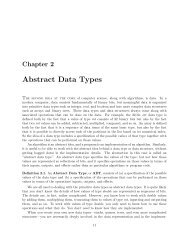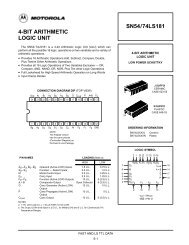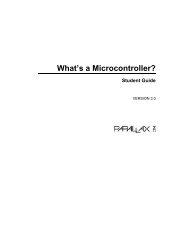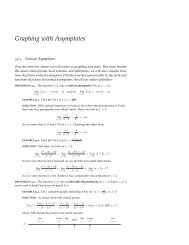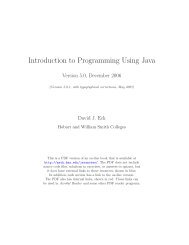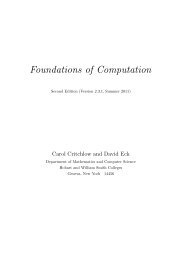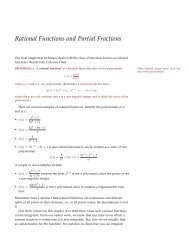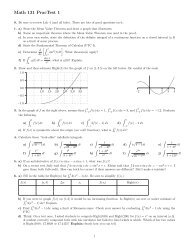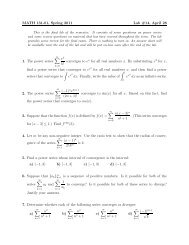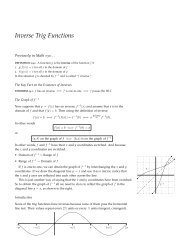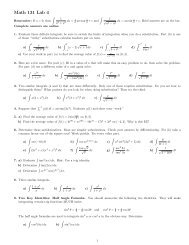Inverse Trig Functions
Inverse Trig Functions
Inverse Trig Functions
Create successful ePaper yourself
Turn your PDF publications into a flip-book with our unique Google optimized e-Paper software.
2The <strong>Inverse</strong> Sine FunctionHowever, if we restrict the domain of the sine function (or any of the other trigfunctions) we can make the function one-to-one on the restricted interval. Thefigure on the left below shows sin x restricted to the interval [−π/2, π/2] whereit is, indeed, one-to-one (passes HLT). So it has an inverse there, which we havegraphed in red the figure on the right.1−π/2 π/2−1.−π/2 π/2...................The inverse sine function is denoted by arcsin x. Your text uses sin −1 x, but moststudents find arcsin x less confusing, and that’s what we will generally use in thiscourse. Since the domain and range of the sine and inverse sine functions areinterchanged, we have• the domain of arcsin x is the range of the restricted sin x: [−1, 1].• the range of arcsin x is the domain of the restricted sin x: [−π/2, π/2]. This isvery important. It says that the output of the inverse sine function is a number(an angle) between −π/2 and π/2.Notice since the arcsine function undoes the sine function, we get some familiarvalues: arcsin(−1) = −π/2 since sin(−π/2) = −1. Or arcsin(1/2) = π/6 sincesin(π/6) = 1/2. Or arcsin( √ 3/2) = π/3 since sin(π/3) = √ 3/2.EXAMPLE 24.1. Normally when we calculate f −1 ( f (x)) we get x because the two functionsundo each other. The same is true here, if the domain of sin x is appropriatelyrestricted to [−π/2, π/2]. For example,arcsin(sin(π/4)) = arcsin( √ 2/2) = π/4.But if we take a value outside of the restricted domain [−π/2, π/2] of the sine functionarcsin(sin(3π/4)) = arcsin( √ 2/2) = π/4.Orarcsin(sin(3π)) = arcsin(0) = 0.The two functions do not undo each other since the arcsine function can only returnvalues (or angles) between −π/2 and π/2.The <strong>Inverse</strong> Cosine FunctionWe can restrict the domains of the other trig functions so that they, too, have inverses.The figure on the left below shows cos x restricted to the interval [0, π]where it is, indeed, one-to-one. So it has an inverse there, which we have graphed



